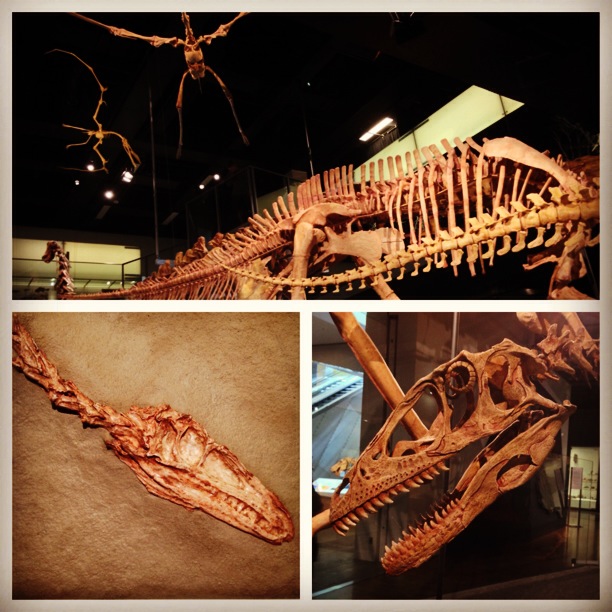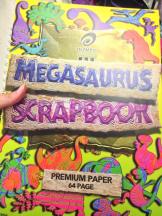Since the start of the year, I’ve spent a healthy chunk of my spare time studying. I have to say, I’ve been amazed at the quality and variety of free online education available in the form of MOOCs (massive open online courses). With six down, three in progress and handful more coming up, it’s time to turn in some reviews!
____________________________________________________________________________________________________________________________
Marine Megafauna: Introduction to Marine Science and Conservation
Duke University (8 week course)Image by David W. Johnston, course instructor and Assistant Professor at Duke University
Rating: 4.5/5
Comment: Great subject matter delivered by a passionate instructor. Quite a lot of work involved with lectures, tests, reading material (PLOS ONE scientific papers) and assignments, but well worth the effort.
Certification available: Statement of Accomplishment (I achieved a 98% grade which meant that mine came with a distinction)
Next session: Not yet advertised. Sign up to be notified!
___________________________________________________________________________________________________________________

Dino 101: Introduction to Paleobiology
University of Alberta (12 week course)
Rating: 4.5/5
Comment: Another terrific MOOC featuring engaging material and presenters. This one gets points for variety – they regularly changed up the format of the video lectures and even took us on-site to excavations in the Alberta Badlands.
Certification available: Statement of Accomplishment
Next session: Not yet advertised. Sign up to be notified!
______________________________________________________________________________________________________________________
 Design: Creation of Artefacts in Society
Design: Creation of Artefacts in Society
University of Pennsylvania (8 week course)
[in progress] – Check back later for review!
______________________________________________________________________________________________________________________
 Ocean Solutions
Ocean Solutions
University of Western Australia (8 week course)
[in progress] – Check back later for review!
_______________________________________________________________________________________________________________________________

______________________________________________________________________________________________________________________________
Community Journalism
Cardiff University (5 week course)
Rating: 3.5/5
Comment: A lot of really useful tips were offered in this one, and I liked the fact that they interviewed a variety of experts in the field.
Certification available: No statement available
Next session: Not yet advertised
___________________________________________________________________________________________________________________________
Climate change: Challenges and Solutions
University of Exeter (8 week course)
Rating: 3/5
Comment: Such an important topic, but I must admit I struggled with some of the higher-level scientific concepts. Again, a variety of subject matter experts were brought in to discuss various topics, keeping it interesting. My favourite part of the course involved learning about ocean acidification.
Certification available: Statement of Participation
Next session: Not yet advertised
_________________________________________________________________________________________________________________
Fairness and Nature: When Worlds Collide
University of Leeds (2 week course)
Rating: 3/5
Comment: Good short course – complex concepts and policies were explained simply, and the course provided much food for thought.
Certification available: Statement of Participation
Next session: Not yet advertised
_________________________________________________________________________________________________________________
 Introduction to Ecosystems
Introduction to Ecosystems
The Open University (6 week course)
[in progress] – Check back later for review!
_________________________________________________________________________________________________________________
 _________________________________________________________________________________________________________________
_________________________________________________________________________________________________________________
Writing for the Web
Open Universities Australia (4 week course)
Rating: 1/5
Comment: Unfortunately, this course only offered very basic, common sense information, no variety in the format of the lectures, limited visual aids and came across as amateur when compared to offerings from other platforms (see above).
Certification available: Certificate of Achievement
Next session: Starts in 2 days. Find out more
_________________________________________________________________________________________________________________
Certificates



Coming up…
- Animal Behaviour | University of Melbourne (8 week course via Coursera)
- What a Plant Knows (and other things you didn’t know about plants) | University of Tel Aviv (7 week course via Coursera)
- Exploring Our Oceans | University of Southampton (6 week course via FutureLearn)






 Photo by Andrew Rankin
Photo by Andrew Rankin Further Reading:
Further Reading:
 Me in my pjs showing off my certificate.
Me in my pjs showing off my certificate. An after-work visit to Museum Victoria to sketch some dino bones!
An after-work visit to Museum Victoria to sketch some dino bones! One of my drawings: Dino skull - Ink on paper, 2014
One of my drawings: Dino skull - Ink on paper, 2014

 My book is filled with these quick anatomical sketches & pages of notes
My book is filled with these quick anatomical sketches & pages of notes
 This photo was posted in the facebook study group I help administer. It's
a fossilised dinosaur egg, won at auction by a lady in New Zealand.
Naturally, we all lost our sh*t over this.
This photo was posted in the facebook study group I help administer. It's
a fossilised dinosaur egg, won at auction by a lady in New Zealand.
Naturally, we all lost our sh*t over this.
 Something I posted to the facebook group: a pic of me at the Otway
Ranges in Victoria, Australia, taken last year. I'd just zip-lined
through the rainforest on a giant flying fox, then I stumbled
across these guys in a field!
http://instagram.com/p/j05ff6QMyF/
Amazing animatronics at Museum Victoria.
Something I posted to the facebook group: a pic of me at the Otway
Ranges in Victoria, Australia, taken last year. I'd just zip-lined
through the rainforest on a giant flying fox, then I stumbled
across these guys in a field!
http://instagram.com/p/j05ff6QMyF/
Amazing animatronics at Museum Victoria.
